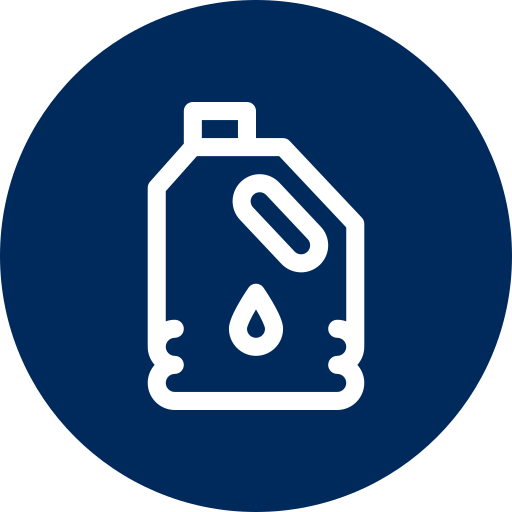Testing that Reaches the World
Analytical Chemistry Testing
Clark Laboratories analytical chemistry lab is an ISO/IEC 17025 accredited laboratory providing testing services to all industries on an array of materials. Testing is driven by client need of benchmark testing, product comparison, product verification, and failure analysis.
Methodology used for testing is based on the materials being analyzed. Testing is performed in accordance with ASTM, API, EPA, MIL-Spec guidelines, and other approved methods. Additionally, Clark supports client supplied methods and in-house method development.
Routine material testing includes, not limited to, ferrous and nonferrous metals, metal alloys, process solutions, raw materials, and petroleum products. Raw materials and by-products such as steel additives, flux, ceramics/refractories, slag, scrap, baghouse dust, coal and coke, and slurry.
In addition to chemical composition of materials, Clark provides the physical chemistry through our Particle Characterization lab; which support particle size, density, porosimetry, and surface area determinations. We offer specialized corrosion testing in our Lubricants and Corrosion labs. Plus mechanical tests which include tensile and hardness.
Chemical compositions are achieved through such instrumentation as:
- Inductively Coupled Plasma Spectroscopy (ICP)
- Optical Emission Spectroscopy (OES)
- Wavelength Dispersive X-ray Fluorescence (WD-XRF)
- X-ray Diffraction (XRD)
- Gas Chromatography (GC)
- Ultra High Pressure Liquid Chromatography (UHPLC)
- Induction Furnace
- Chemiluminescence and UV-Fluorescence
- Ion Chromatography (IC)
- Scanning Electron Microscopy/Energy Dispersive X-ray (SEM/EDS)
- plus, Wet Chemistry – bench-top testing via titrations, distillations, etc.
The materials for which we analyze support Agriculture, Medical/Pharma, Food and Beverage, Electronics, Energy, Primary Metals, and Heavy Industry. Some specific examples include testing for Batteries, Ceramics, Packing Material (VCI), and varying Industrial Minerals.
Elemental analysis is achieved through OES, ICP, WD-XRF, or XRD.
OES:
Optical Emission is a less destructive technique used to determine the elemental composition of solid metals. Common for verification and failure analysis, the surface of the metal is first cleaned and polished. The surface of the specimen is ‘sparked’ to determine the elemental composition. With this technique only Ferrous specimens are analyzed; in accordance to ASTM E1086 and ASTM E415. We refer to this testing as “Steel Chemistry.”
Typcial: Al, Cr, Cu, Mn, Mo, Ni, Nb, P, Si, Ti, V , Fe-Balance
ICP:
If a solid, the material is first crushed or cut/milled. The material is digested into a liquid solution and analyzed by ICP for the elemental composition, as total metal, each element reported individually. The methodology utilized is determined by the material being tested; notably acid digested and/or fusing with a borate flux.
Liquids are digested and analyzed in a similar manner, if not analyzed on an as-received basis.
Typical: Al, Ag, As, Ba, Be, Cd, Cr, Ca, Co, Cr, Cu, Fe, K, Li, Mg, Mn, Mo, Na, Ni, P, Pb, Sb, Si, Sn, Ti, V, W, Zn
Results are reported as either Elemental or Elemental Oxides, depending on the material being analyzed.
WD-XRF:
This technique is commonly used for either ceramics/refractories or petroleum products. Varying raw materials, ceramics, ores, and fluxes are first crushed when necessary, oxidized (Change on Ignition or Loss on Ignition), and fused for the determination of elemental oxides.
Typical: SiO2, Al2O3, CaO, MgO, P2O5, K2O, Na2O, Fe2O3, MnO, TiO2, Cr2O3, V2O4, ZrO2, plus CaF2, and F
Petroleum products are analyzed as-received, and tested for wear or additive elements. Analysis is supported by ASTM D6443 and ASTM D2622.
Typical: S, Cl, P, Ca, Zn, Na, Mg, Si; others by request
XRD:
X-ray Diffraction is performed on solid materials. This technique provides the Crystalline Phase Identification, the compounds present in the material. Reported as a Qualitative/Semi-Quantitative basis, this technique is essential to understanding the elemental makeup of the material. Particle Characterization testing is also a common addition for more knowledge of the material characteristics.
Crystalline Silica determinations are also performed via XRD. This technique is based on the NIOSH 7500 method, with a reporting limit as low as 0.1 %. Testing materials for Crystalline Silica has become more common due to the implementation of the new OSHA standard. The analysis quantifies α-Quartz, Cristobalite, and Tridymite independently.
Other common test parameters include:
IC:
Anion determinations are common for various liquids; process solutions, stripping solutions, coatings, emulsions, etc. In many cases, the solution is analyzed as-received. Whereas, if organics are present, the material is tested via ASTM D808, to first eliminate the presence of the organic matter.
Bulk materials are typically leached, with the leachate being analyzed for the anion concentration.
Typical: Fluoride, Chloride, Nitrite, Bromide, Nitrate, Phosphate, Sulfite, Sulfate
Induction Furnace:
Determined by combustion, solids are first crushed or cut/milled and analyzed by induction furnace to determine Carbon, Sulfur, Oxygen, or Nitrogen. Carbon/Sulfur are most common on various raw materials and metals; Oxygen and Nitrogen on metals only, ASTM E1019.
Chemiluminescence and UV-Fluorescence:
Typical for petroleum-related materials, Nitrogen and Sulfur are common test paramaters, following ASTM D5762 and ASTM D5453.
Wet Chemistry:
Wet Chemistry is the general category of bench-top tests involving titrations, distillations, and varying chemical reactions. Some examples include:
-
- Free and Total Sulfur MIL-G 155A
- Pyritic Sulfur
- Forms of Iron, i.e. Oxidation States of Iron
A common test for slags, ores, sinters and samples bearing metallic iron. The material is first crushed to -200 mesh. Following several steps, Metallic Iron, FeO, and Total Iron are determined. Fe3O4 by be quantified separately by XRD.
-
- PCA Determinations IP 346
Following method IP 346, polycyclic aromatics are determined petroleum products; notably unused additive free lubricating base oils and asphaltene-free petroleum fractions
-
- Oil Film Weight
This test is common on sheet steel. A technique used to determine the amount of Oil on the surface. Common additions to this test are Metal Fines and Soaps.
- Acidity, Alkalinity, pH, % Solids, % Moisture
- Total Suspended Solids EPA160.2/ASTM D5907
- % Volatile Content EPA 24 11.2.2.1 mod.
Specialty test parameters include:
Macroetch:
The test reveals the variations in structure, flow lines, columnar structure, dendrites, segregation, inclusions and surface imperfections. This is a test to measure internal quality for cast and wrought steel products. ASTM E340
Sulfur Print:
The sulfur printing test reveals the distribution of sulfides in steels. The sulfur print image reveals details of the solidification pattern, deoxidation effectiveness, segregation, porosity, cracking. ASTM E1180 This test complements the Macroetch test.
Corrosion:
testing according to API guidelines
Failure Analysis:
FA is specific to each job. Work may include a detailed visual examination with photographic documentation of findings, metallographic evaluations with micro-hardness for properties, microstructure and material defects, with scanning electron microscope (SEM/EDS) fractography examinations to identify the failure mode and characterize features of interest. A formal report includes a discussion of results and conclusions.



